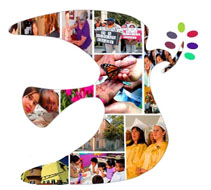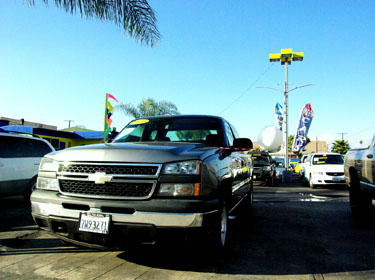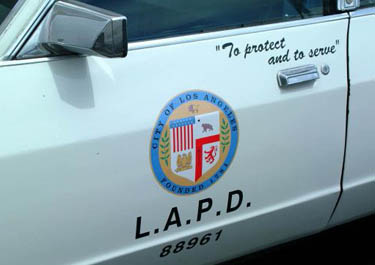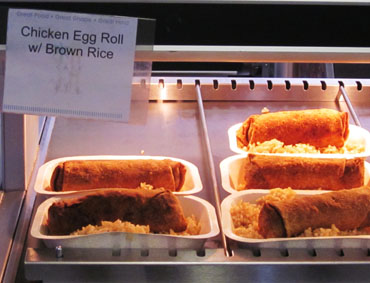Listen to an audio story from Annenberg Radio News:
—–

A crowd of about two dozen protesters squished their way into the bank, paying no heed to disgruntled staff and security guards. Their leaders held a letter demanding Wells Fargo participate in a state-wide program called “Keep Your Home California.” The “Keep Your Home” program is federally funded. If the bank reduces the homeowner’s principle, the program will match the difference dollar for dollar. But the protesters want Wells Fargo to participate.
Xaime Casillas was like many protesters holding their ground in the bank—he was getting closer to losing his home. Casillas welcomed his first baby last year, but when his newborn son suffered two heart attacks, he had to leave his job. He’s been in the loan modification process ever since and it hasn’t been going well. He’s angry with the banks.
“It’s like the banks have a shredding machine that you’re using to fax in all your documents to get a loan modification. And it seems like it just goes right into the shredder.”
Casillas’ lender is Chase Bank. He was so close to getting a modification, but then they claimed to not have a crucial page of the agreement and closed his case. Casillas isn”t buying it. He believes the prolonged modification process allows the bank to tack on fees and to keep the homeowner paying, rather than abandoning ship.
“Call them up. They lost this, they lost that. They don’t really care about you.”
The TARP bailout still stings for these homeowners. To them, it doesn’t seem right that taxpayers bailed out the same banks that are now denying them help.
Peggy Mears’ home is also in trouble. But she wasn’t about to give up.
“We will take it to the streets, you will see Egypt in California.”
The Los Angeles Police Department arrived later and said that a lot of police officers are also facing foreclosure. The protesters crossed the street to the Attorney General Kamala Harris’ office. They delivered 10,000 signatures demanding action against the biggest banks.
Wells Fargo released a statement that have agreed to participate in the “Keep Your Home California” program and that they will continue to work with homeowners, non-profits and elected officials to stop foreclosures.
Hai-me Caseehas was resigned but determined.
“I might lose my home, but I’m still gonna help other people keep theirs.”















 The past two years have seen both the decline and resurgence of American car companies. Don Chou, who owns a General Motors (GM) car dealership in South Los Angeles, has ridden those waves, seeing his sales decrease dramatically and then begin to steadily rise again.
The past two years have seen both the decline and resurgence of American car companies. Don Chou, who owns a General Motors (GM) car dealership in South Los Angeles, has ridden those waves, seeing his sales decrease dramatically and then begin to steadily rise again.  With the largest housing projects west of the Mississippi and 120 recognized gangs within 10 square miles, the Southeast Division of the Los Angeles Police Department (LAPD) is working harder than ever to keep children away from the gang culture.
With the largest housing projects west of the Mississippi and 120 recognized gangs within 10 square miles, the Southeast Division of the Los Angeles Police Department (LAPD) is working harder than ever to keep children away from the gang culture.  When the 1 p.m. bell rang at Manual Arts High School, the students fled to the cafeteria for lunch. As the line lengthened, students carried small Styrofoam trays toward shelves of food.
When the 1 p.m. bell rang at Manual Arts High School, the students fled to the cafeteria for lunch. As the line lengthened, students carried small Styrofoam trays toward shelves of food.  In 2004, the school board passed the Childhood Obesity Prevention Motion; in 2005, it launched the Cafeteria Reform Motion. Both motions set strict guidelines on what kind of food can be served in schools based on calorie count. They also reduce levels of sugar, sodium, and saturated fat and eliminating trans fat and palm oil in menu items and junk food and soda sales.
In 2004, the school board passed the Childhood Obesity Prevention Motion; in 2005, it launched the Cafeteria Reform Motion. Both motions set strict guidelines on what kind of food can be served in schools based on calorie count. They also reduce levels of sugar, sodium, and saturated fat and eliminating trans fat and palm oil in menu items and junk food and soda sales. Healthier Food, Healthier Students
Healthier Food, Healthier Students Ventura said that each cartoon of chocolate milk has two teaspoons of sugar. If a student drank two cartoons every school day, the student would consume 14 cups or roughly a gallon of pure sugar.
Ventura said that each cartoon of chocolate milk has two teaspoons of sugar. If a student drank two cartoons every school day, the student would consume 14 cups or roughly a gallon of pure sugar. 




